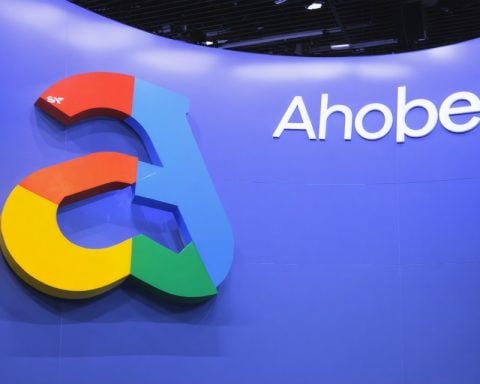- Nvidia’s stock has declined by over 6% despite positive financial results, contrasting with a 5% rise in the S&P 500.
- The company reported outstanding earnings with $35 billion in sales and a net income of 55% of revenues.
- Investors show concern over Nvidia’s $3 trillion market cap and high price-to-earnings ratio.
- Key strengths include leadership in AI chip technology and strong financial growth.
- Challenges include intense competition, Chinese antitrust investigations, and potential AI investment slowdowns.
- Long-term optimism remains high, contingent on Nvidia’s innovation and ability to outpace competitors.
In a twist of market dynamics following the U.S. presidential election, Nvidia, a former powerhouse in the tech sector, finds itself navigating choppy waters. While the S&P 500 has soared by 5%, Nvidia’s stock has unexpectedly dipped over 6%, raising eyebrows and speculation about its future.
As a leader in tech innovations, Nvidia’s recent earnings report was nothing short of spectacular—sales rocketed to $35 billion, marking a net income of 55% of revenues. Despite these stellar financial performances, the anticipated stock surge fell flat, hinting at investors’ growing skepticism regarding the company’s towering $3 trillion market cap and its ambitious price-to-earnings ratio. The idea of being “priced to perfection” looms over Nvidia, where any deviation from extraordinary profit expectations could spell market upheavals.
Nvidia’s Strengths:
– Pioneering advances in AI chip technology solidify its competitive edge.
– Impressive financial metrics showcasing robust growth exceed market predictions.
Market Pressures:
– Intense competition in AI technology poses significant hurdles.
– Ongoing Chinese antitrust investigations and a possible slowdown in AI investments challenge future growth trajectories.
Looking forward, Nvidia remains a cornerstone in the AI landscape. Analysts express optimism, conditional on Nvidia’s ability to innovate and outmaneuver emerging competitors. For investors, the journey with Nvidia may be volatile, yet viewing its stock through a long-term lens could unveil prosperous opportunities.
In the grand scheme, Nvidia’s path may be fraught with competition and market challenges, but its potential remains bright. As the tech giant strives for sustained innovation, its commitment to overcoming market dynamics will be pivotal in securing its future standing.
Why Nvidia’s Stock is Falling Despite Record Sales and How It Might Bounce Back
Updated Insights on Nvidia’s Market Challenges and Opportunities
In the ever-evolving tech landscape, Nvidia faces unique challenges despite its record-breaking sales. Here are some critical questions and answers that provide insight into Nvidia’s current situation:
1. Why Did Nvidia’s Stock Drop Despite Strong Earnings?
Despite reporting a booming $35 billion in sales and an impressive net income of 55% of revenues, Nvidia’s stock has recently fallen more than 6%. This dip can be attributed to investor skepticism about Nvidia’s high $3 trillion market cap and ambitious price-to-earnings ratio. The concept of being “priced to perfection” suggests that Nvidia’s stock is expected to deliver flawless performance; any minor setback could prompt a stock correction due to inflated expectations.
2. What Are the Main Challenges Nvidia Faces in the AI Sector?
Nvidia is not only battling market dynamics but also grappling with several industry-specific challenges:
– Intense Competition: Rivals such as AMD and Intel are rapidly advancing in AI chip technology, challenging Nvidia’s dominance.
– Regulatory Scrutiny: Investigations, especially concerning China’s antitrust probes, potentially disrupt Nvidia’s international market operations.
– Investment Trends: A potential slowdown in AI investments could affect Nvidia’s future growth, emphasizing the importance of continuous innovation.
3. How Can Nvidia Sustain Its Growth in the Competitive AI Market?
To maintain growth, Nvidia needs to focus on several strategic initiatives:
– Continued Innovation: Pioneering new AI applications and technologies will help Nvidia maintain its competitive edge.
– Diversification: Expanding product lines beyond traditional markets can lessen the impact of sector-specific slowdowns.
– Strategic Partnerships: Forming alliances with other tech leaders can enhance Nvidia’s market reach and technology capabilities.
For further information on Nvidia and its market position, you can visit Nvidia.
Conclusion
Despite current market challenges, Nvidia’s potential remains significant. By focusing on strategic innovation and diversification, Nvidia is poised to rise above market pressures. Viewing its stock as a long-term investment could offer lucrative opportunities for forward-thinking investors as the company navigates its path through a complex landscape.


















